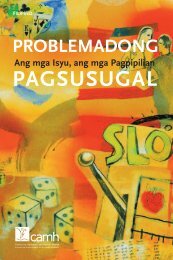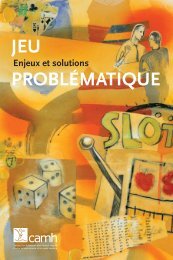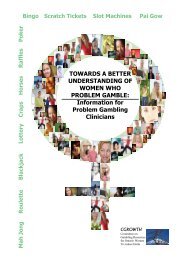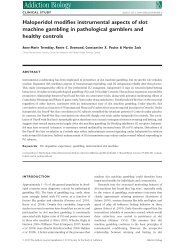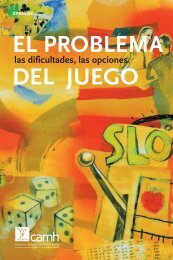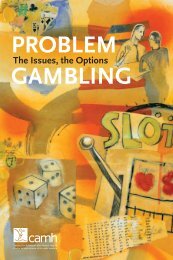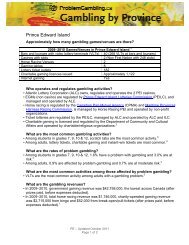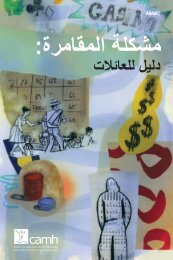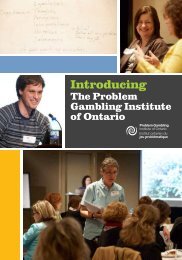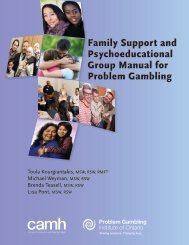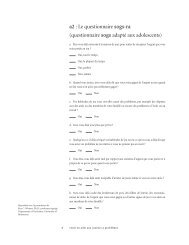Youth Making Choices: Gambling Prevention Program
Youth Making Choices: Gambling Prevention Program
Youth Making Choices: Gambling Prevention Program
You also want an ePaper? Increase the reach of your titles
YUMPU automatically turns print PDFs into web optimized ePapers that Google loves.
Unit 1: Risk and RewardConnectionsPairs or Small Groups• Design a checklist for risk assessment that an individual can use beforemaking a decision involving risk. Some aspects that students shouldinclude are (a) the preferred temperament for this type of risk, (b) bestqualities and strengths for taking this type of risk, (c) considerationsand questions that should be thought about before taking this risk, and(d) the ways a person may be affected emotionally by taking or not takingthis risk.• Teacher must make sure that students are familiar with these terms:temperament, qualities, traits, characteristics.Whole Class Debrief• Risk can be managed• Forethought is essential• Discuss personal qualities and strengths (temperament, personal values,etc.) and how they impact an individual when making decisions. Forexample, if one values equality, then this would impact a decision whenfaced with a situation of inequality. If one witnesses a student being bulliedbecause he or she is lesbian, gay, bisexual or transsexual (LGBT), how onevalues equality will play a role in whether or not one chooses to intervene.• It is important to note, however, that these personal qualities and strengthsdo not necessarily increase the likelihood of a positive outcome. Forexample, if one chooses to intervene, there may be a positive outcome (theperson is safe; those bullying the individual recognize what they are doingis wrong; etc.) but there might also be a negative outcome (the interveningindividual now becomes the target, etc.). However, if one chooses notto intervene, there might also be positive outcomes (keep self safe) ornegative outcomes (the person continues to get bullied; the bullies mightstart bullying others; etc.).Think, Pair, Share• Individuals work from prepared scenarios, Student Resource 5: CaseStudies to assess situations for preferred temperament, best qualities fortaking this type of risk, considerations and questions to think about beforetaking this risk, emotional effect of taking or not taking a particular risk.AfL: ChecklistAfL: AnecdotalCommentsAfL: Critical AnalysisAfL: ScenariosConsolidation and Connection> Helping students demonstrate what they have learned> Providing opportunities for consolidation and reflectionIndividual RAFT Assignments• The RAFT assignments are differentiated based on student intelligencepreferences. RAFT assignments can be done independently, in pairs orin groups either in class or out of class. In all cases students require anunderstanding of the aspects of a RAFT topic, and rubrics need to besupplied for all topic possibilities.AfL or AoL: Strategy/Assessment Tool<strong>Youth</strong> <strong>Making</strong> <strong>Choices</strong>: <strong>Gambling</strong> <strong>Prevention</strong> <strong>Program</strong>www.Problem<strong>Gambling</strong>.ca1.6




